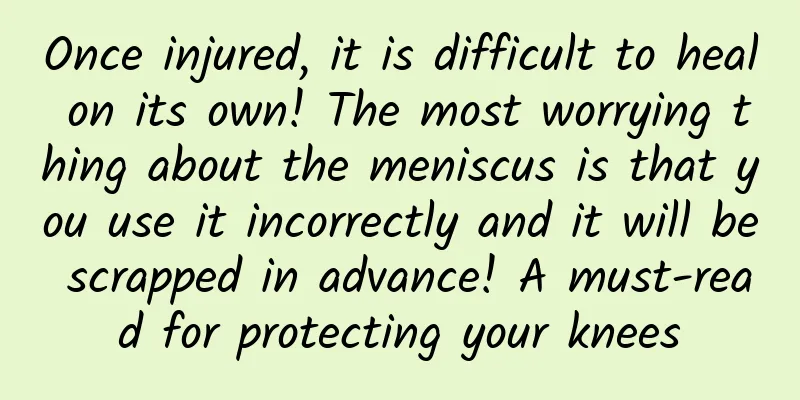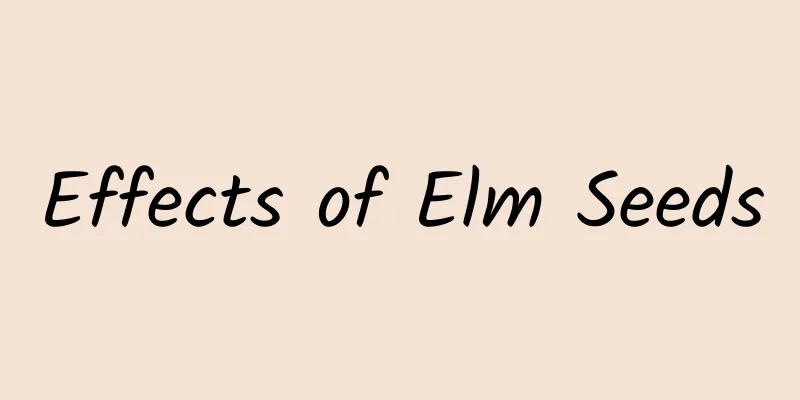What is Qianghuo Shengshi Decoction

|
Qianghuo Shengshi Decoction is a common Chinese medicine prescription for treating diseases. This prescription has the effect of clearing away heat and detoxifying. In clinical practice, Qianghuo Shengshi Decoction is often used to treat headaches, heaviness of the head, or excessive moisture. It even has a good therapeutic effect on patients who feel sick all over. Therefore, it can be said that Qianghuo Shengshi Decoction can not only treat diseases, but can also be used as a health care prescription for daily health care. This Qianghuo Shengshi Decoction is mainly made of some Duhuo wine, Qianghuo, and some other Chinese medicines. So what are the prescriptions for making Qianghuo Shengshi Decoction? How can we use Qianghuo Shengshi Decoction for health preservation in daily life? Let's take a brief look at it together. Qianghuo Shengshi Decoction (a diuretic) [Source] Yuan Dynasty: Li Dongyuan's "On the Confusion of Internal and External Injuries" [Composition] Qianghuo, Duhuo washed with wine, Ligusticum chuanxiong washed with wine, 1 qian each, 5 fen of licorice, 2 fen of Chuanxiong, washed with wine, 3 fen of Vitex mangzi, crushed, 3 slices of ginger [Usage] Chew the above ingredients, add two cups of water, boil until one cup remains, remove the residue, and drink it warm after meals, slowly taking until you sweat. [Rhyme] Qianghuo is better than dampness. Qianghuo alone is used, together with Chuanxiong, Manjingcao, and Saposhnikovia divaricata. When cold and dampness are on the surface, the head and body feel heavy, and it is effective in dispelling dampness. [Indications] It is used to treat dampness on the surface of the body, headache, heaviness of the head, or heavy pain in the waist and spine, or pain all over the body, slight fever and drowsiness. [Addition and subtraction] If the body feels heavy and the waist is deep, it is due to cold and dampness in the body. Add wine to wash the Stephania tetrandra and Aconite. 【Discussions by Various Schools】 1. "Yi Fang Ji Jie" by Wang Ju'an: This is a medicine for the foot sun meridian. The classics say: Wind can overcome dampness. Qiang, Du, Fang, Gao, Xiong and Man are all wind-relieving drugs. When dampness is on the surface, the six herbs are pungent, warm and can disperse it. They are all medicines for dispelling exterior pathogens, so that the dampness can be expelled through sweat, and then all the evils will be dispersed. If the dampness is inside, then you should use a diuretic agent. 2. Zhang Shiwan in "Zhang's Medical Encyclopedia": This is used to treat dampness in the head and neck, so the wind-clearing drugs of Qiang, Fang, Xiong and Gao are used to eliminate the evil in the upper part. Although the heat floats up, the dampness is originally located in the lower part, so Duhuo is used again to penetrate the Shaoyin meridian. Its wonderful effect lies in slowly inducing slight sweating, so licorice is added to the dosage to slow down the pungent and dispersing properties of other medicines, so that the dampness can be slowly removed without having to open the sweat pores and quickly expel the wind evil, which makes the skin weak and powerless, and the dampness evil is therefore retracted. However, the wind is removed but the dampness is not. If there is heaviness below the waist, it means that the evil cold and dampness remain in the yin part. This prescription can add Stephania to expel dampness, and must include Shengfu to promote menstruation. If there is heaviness and heaviness in the body and waist, it means that the evil dampness and heat spread throughout the yang part. This prescription can add Atractylodes to dry up dampness, and must include Phellodendron to clear away heat. If you do not have a thorough understanding of the prescriptions of Changsha Atractylodes and Fu, Guifu, Gardenia and Platycodon, you will not be able to use these methods effectively. 3. Yu Jiayan in "Medical Laws" said: If dampness is present and there is heat, it is easy to induce sweating but difficult to induce defecation, so the usual method should be changed to dispersing the dampness on the surface. This prescription is the right way to achieve this. 4. Gu Songyuan in "Medical Mirror": This is a prescription for raising yang and dispersing dampness. For all cases of dampness acquired from the outside, whether in the upper or lower parts, this prescription can be used to treat the disease with modifications according to the symptoms. According to the "Golden Chamber", "Pain and restlessness in the joints of the Taiyang meridian, and a deep and thin pulse, this is called dampness in the body, also known as dampness and arthralgia." Taiyang disease must be accompanied by fever and aversion to wind. If dampness stays in the joints, there will be pain. If the yang is depressed and cannot be extended, there will be restlessness. If the pulse is not deep and thin, it is not caused by external wind fighting against it, so it is only called dampness in the body, also known as dampness and arthralgia, because the dampness evil blocks the yang energy in the body. This prescription is suitable for treatment, which can induce slight sweating to promote the flow of Yang. 【Changes】 (1) In addition to Angelica dahurica, Vitex rotundus, Ligusticum chuanxiong and Licorice root, this prescription also adds Cimicifuga heracleifolia and Atractylodes lancea. It is called Qianghuo Chushi Decoction. Treat rheumatism and pain all over the body. (2) This recipe removes Chuanxiong and adds Astragalus, Angelica, Atractylodes, and Cimicifuga to create Shengyang Chushi Decoction, which is used to treat swelling caused by watery hernia. The sweat from the genitals never stops. Add malt, Shenqu, Poria, Alisma, except for Angelica and Astragalus. It is also known as Shengyang Chushi Decoction, and is used to treat diarrhea due to spleen deficiency. Internal and external injury identification [Source] Volume 2 of “Differentiation of Internal and External Injuries”. [Synonym] Tongqi Fangfeng Decoction (Volume 5 of "Medical Inventions"). 【Composition】 Qianghuo Duhuo, Ligusticum chuanxiong, 1.5g each, 0.9g of Vitex mandshuricae [Usage]Crush the above medicines into powder and take them all as one dose. Use 300 ml of water, boil until 150 ml is left, remove the residue, and drink it while warm after meals. 【Function】Dispel wind and dampness. [Indications] Rheumatism on the surface, headache, stiff neck, heavy pain in the waist and back, pain all over the body, difficulty in turning, chills and fever, and floating pulse. [Addition and subtraction] If there is cold and dampness in the meridians, heaviness of the body and heaviness of the waist, add 1.5 grams of Hanfangji washed with wine; for mild cases, add 1.5 grams of Fuzi; for severe cases, add 1.5 grams of Chuanwu. The above is a brief introduction about Qianghuo Shengshi Decoction. Although Qianghuo Shengshi Decoction can treat many diseases and is also very helpful for health care, not everyone in life is suitable for using Qianghuo Shengshi Decoction for health preservation. Therefore, it is best to ask yourself whether it is suitable for you before taking Qianghuo Shengshi Decoction. |
Recommend
What are the effects of willow teeth
Willow trees are not uncommon in our daily life. ...
Can pine pollen cure insomnia?
Pine pollen contains a variety of trace elements....
Insectophobes beware: When bed bugs invade, the biggest mistake you can make is trying to kill them?
Leviathan Press: Last summer, I had several red, ...
"Pink Killer" wanted poster, AI's ability to read breast X-rays is comparable to that of doctors
According to statistics from the World Health Org...
The efficacy and function of Himalayan rice pocket
Only when we understand the main ingredients of a...
Throw the kangaroo out of the earth! This year's funny wildlife photography award is all emojis!
Recently, the Comedy Wildlife Photography Awards ...
One lie down, two clap, three roll, fall into the ice hole, remember this can save your life →
On December 10, a middle school student in Fushun...
The efficacy and function of Bletilla striata
I don’t know if you are familiar with Bletilla st...
Satellite cloud images help you understand the weather: What does sandstorm weather look like in the eyes of Fengyun satellites?
Although the grains of sand are small, when they ...
Using the gravity of a planet to fling a probe out? The magic of the "gravitational slingshot"
In the setting of "The Wandering Earth"...
A tomato can cure your procrastination...procrastination?
When studying, have you ever been troubled by the...
After being abducted for 53 years, she almost saw her mother - but she died
On August 18, the Miami Seaquarium in the United ...
The efficacy and function of the iron lantern rabbit ear wind
Glechoma longituba is a kind of traditional Chine...
The efficacy and function of Fritillaria thunbergii
I wonder if you have ever heard of Fritillaria th...
The efficacy and function of the Big Nine-section Bell
There are so many medicinal herbs in the world, a...









